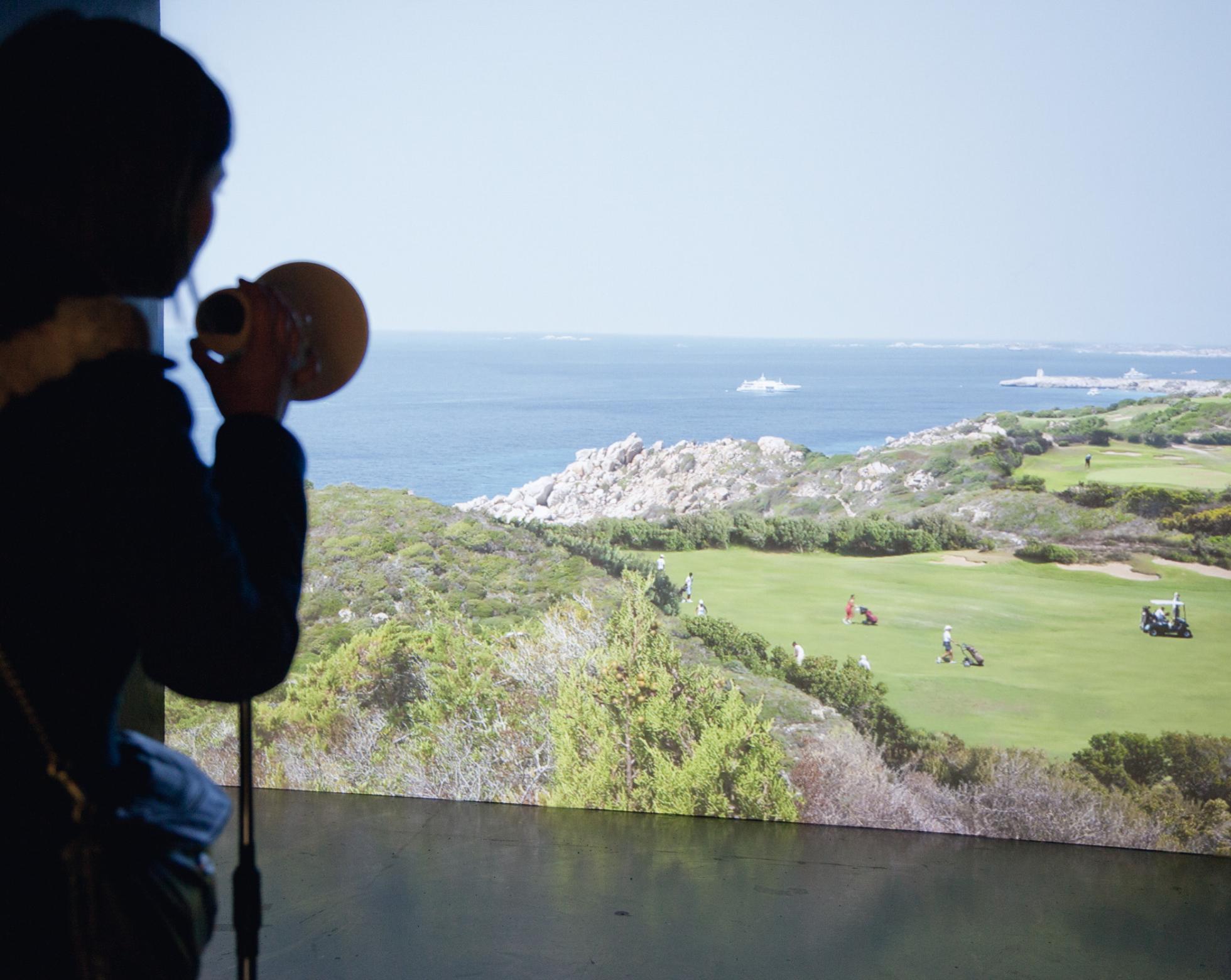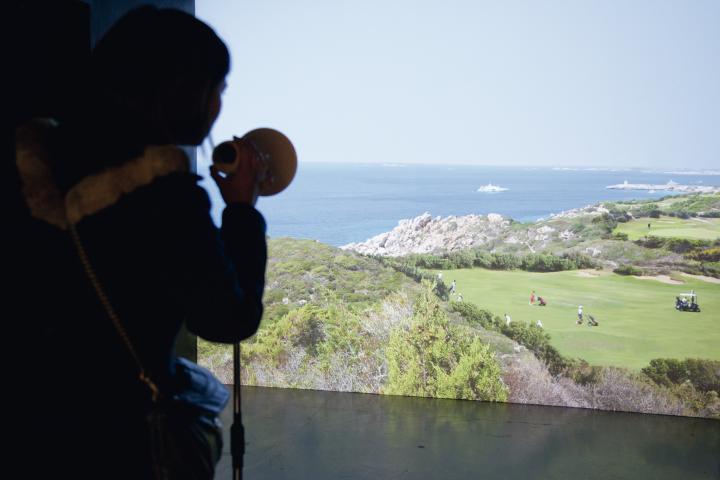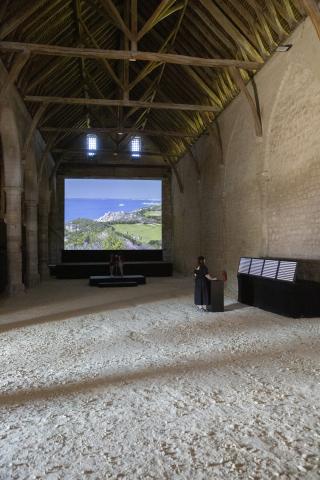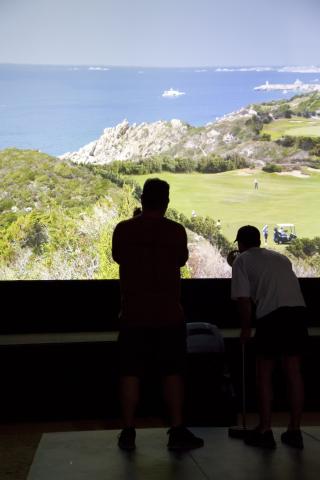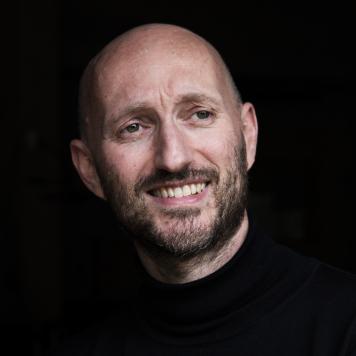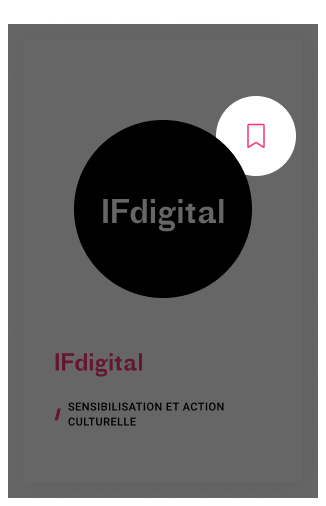Interactive installation, 2004. Free Time is an interactive installation. On a large screen, we see a static shot of a vast, sun-bathed and beautiful landscape adjoining a cliff that juts out onto the blue-green sea. A bit lost in the landscape, towards the bottom end of the image, we see the fields of a magnificent golf course.
Free Time
Find out more
Free Time is an interactive installation. On a large screen, we see a static shot of a vast, sun-bathed and beautiful landscape adjoining a cliff that juts out onto the blue-green sea. A bit lost in the landscape, towards the bottom end of the image, we see the fields of a magnificent golf course: the fairway, and, beyond, it, the putting green.
When the viewers speak, scream or make any noise at all in front of the image, the sounds are amplified and filtered so as to create an echo. When there is no sound, there are but a few rare golfers, tiny given the distance, animating the image. More golfers, however, appear and move about in answer to sounds. Sounds and voices are captured and amplified by a megaphone that makes it easier to command and animate the image. The stronger, i.e., the more ‘oppressive’, the tone, the more animated the image becomes: more and more golfers appear and move around, their pace increasing to the point where they become reminiscent of burlesque. As they are being ordered about by the voices and sounds, their gestures become gradually repetitive, and start slowly to evoke a situation of ‘forced labor’. The echo we hear is more suggestive of an enclosed space than of a vast open landscape. What was, initially, a place of rest and relaxation for the well off and a space for individual communion with nature, comes to resemble an archaic theatre, full of the intense activity characteristic of an open-pit mine, where freedom, more often than not, is conditional. As the image, at first a cliché for getting away from it all, is manipulated, it gradually becomes a trap. The situation undergoes a reversal: the ‘players/deciders’ now obey viewers who have become deciders. The viewers enter the game, and they do so in the role of ‘tormentors’. The power they exercise over the image is just as revealing of their social frustrations as the predictable use of their free time.
Credits:
Programming: Élian Chrébor (visual) and Thierry Fournier (sound)
Animation: Patrick Hepner and Pascal Loddo
Production: Arcadi (Action régionale pour la création artistique et la diffusion en Île-de-France) & Dispothèque
Thanks to the Lemarchand family
Votre contact
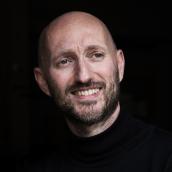
Merci pour votre contribution.
Vous serez informés de sa publication ou d’une éventuelle demande de compléments.





